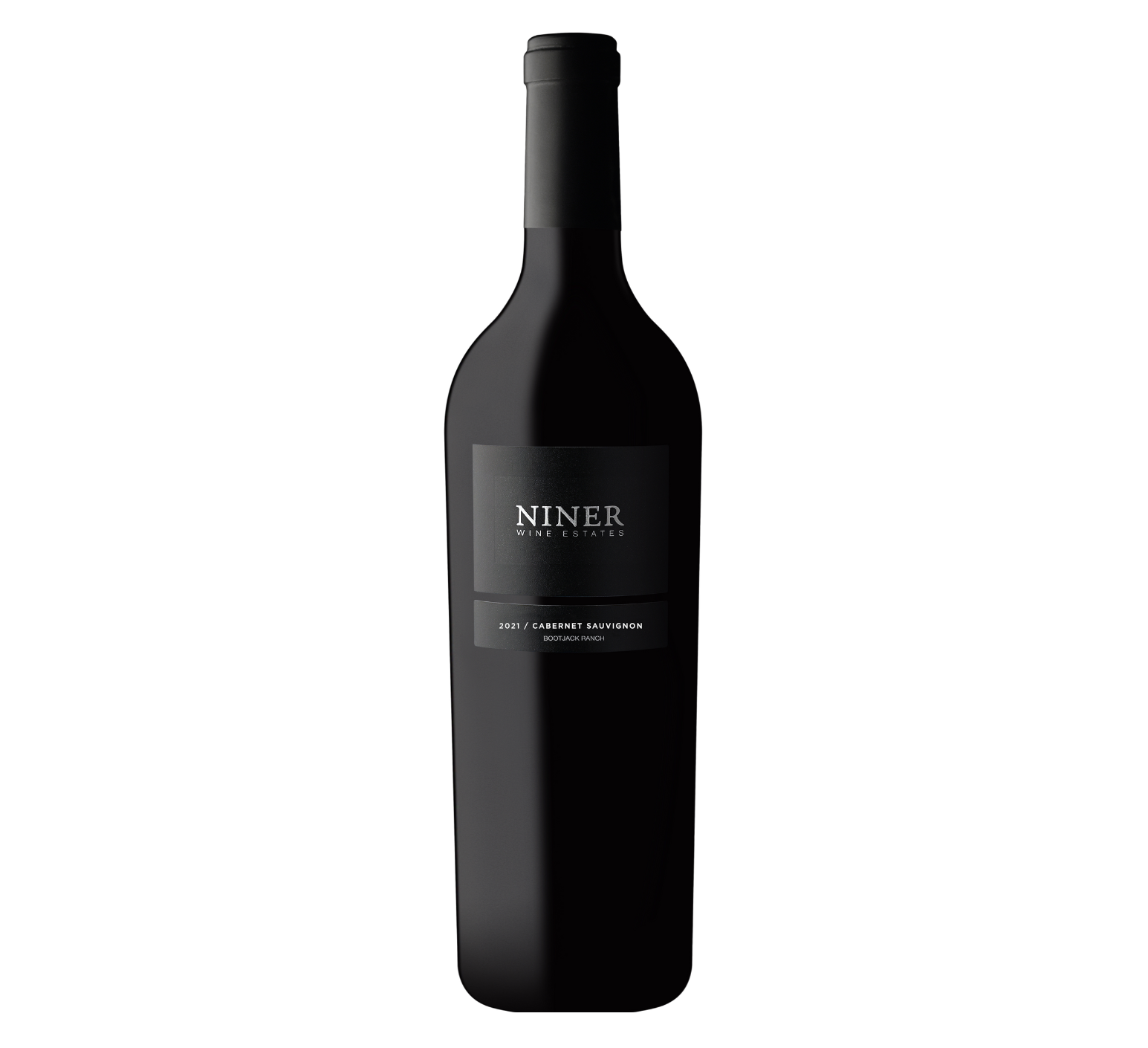Since the release of the 2021 Reserve Cabernet Sauvignon, we have heard some of Patrick Muran’s insights on what makes Cabernet so unique. This wine was made using two of our oldest blocks of Cabernet Sauvignon, revered for their structure, vibrancy and deep color. Read more of Patrick’s thoughts below.
What was your first experience with Cabernet Sauvignon?
My first experience with Cabernet Sauvignon, was with company, on a balcony, overlooking the ocean on a moonlit night. My first winemaking experience was years later, working with Cabernet Sauvignon grown in Malibu by the famed George Rosenthal. The quality and appearance of the grapes themselves were striking right when they arrived and the differences in the grape and subsequent wine made me curious.
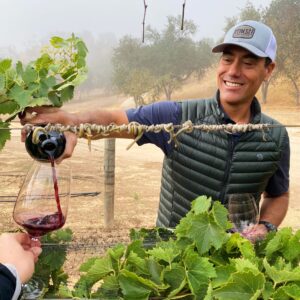
What was your first “ah-ha” bottle of Cabernet Sauvignon?
In 2007 I tried both the 1999 and 2003 Heitz Cellars Cabernet Sauvignon at a restaurant and was blown away. Both were big, powerful wines with such strong, chewy tannins and an impressive mouthfeel – it was definitely a WOW wine for me and showed me the potential this wine has.
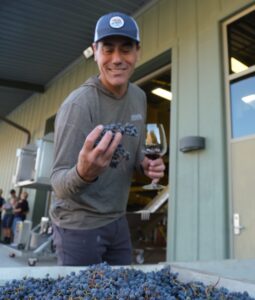
What attracted you to Cabernet Sauvignon?
I like challenges, and Cabernet Sauvignon can be a pain in the ass. It evolves slowly and the best expressions of it require endless patience to allow all its sharp angles to soften. You frame it, shape it and then watch it become something completely its own. You have to pick it at full ripeness, allow it to ferment on its own schedule and then rest in oak barrels for a long time. I’ve found our sweet spot is anywhere from 18-26 months before I’ll start to think about bottling it.
What makes Cabernet Sauvignon different than other varieties of grapes?
Cabernet Sauvignon has all the qualities that are sought after by both winemakers and wine drinkers: deep color, robust tannins, a spectrum of fruit flavors, complexity, and age-worthiness. It also has one of the highest antioxidant counts and can make wines that last decades. It makes some of the most interesting, delicious wines that you can find.
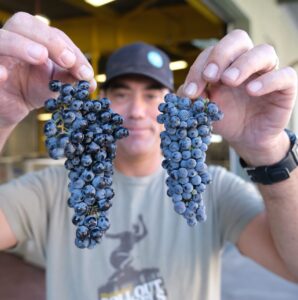
Are there things you do differently when making Cabernet Sauvignon than you do with other Bordeaux varieties?
Definitely. Working with Cab in different vintages is not a linear process and my approach adapts as the wine changes throughout fermenting and aging. I usually frontload the fermentation, almost aggressively extracting tannins right at the beginning because Cab can handle it better than other grape varieties. It also gets a wide variety of oak barrels to build even more complexity. I use small barrels, large barrels and even casks during its aging and lots of racking (moving the wine from barrel and introducing controlled amounts of oxygen) which only improves its final profile. Not every grape can handle that regiment, but it really makes our Cab shine.
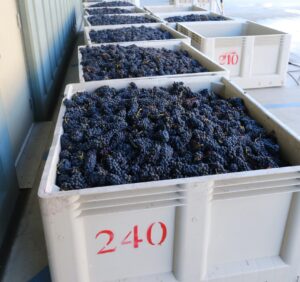
How has your approach to making Cabernet Sauvignon changed over the years?
It’s funny, but after making Cab for over 20 years I’ve found my process becoming simpler, focusing on the basics and reacting quickly when needed. I want to make a powerful wine that shows the full potential of the grape but keeps a balance in the glass. I’ve also found myself much more patient with picking now than when I first started. I wait for optimal ripeness because our vineyards have so much natural acidity that they can handle a longer hang time.
Is there a particular vintage that stands out in your mind?
‘09, ‘13, ‘18, ‘21 and ‘23 are all strong. Interestingly, it’s mostly odd years so get ready for the 2025 vintage!

You age Cabernet Sauvignon in a variety of vessels from traditional wine barrels to large oak vats and casks to concrete vessels. What does this bring to the final wine?
The best way I can explain it is that the shape of the wine changes depending on the vessel. The process is slow but over time the wine takes on a different form and expression. Larger format barrels are something we’re playing with right now, and Cabernet Sauvignon especially loves oak casks.
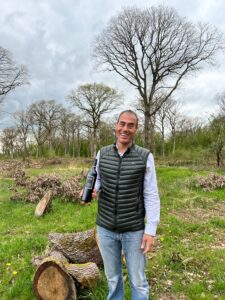
What were some things you did in the vineyard and in the cellar to make the 2021 Reserve Cabernet Sauvignon Bootjack Ranch?
We started with choosing standout vineyard blocks. Block 2 is home to 22-year-old vines that bring concentration and rich flavor while Block 15 has younger vines that bring vibrancy to the wine. In 2021 we were blessed by a cool Fall that allowed both blocks to develop fully. Once we picked the grapes, we kept it rather simple. We had a 14-day ferment and then aged the wine in French oak barrels for 2 and ¼ years. I used some of my favorite barrels from the Allier and Bertrange forests in France and then bottled the wine unfiltered.

Meet Patrick!
A scientist by education, Patrick graduated with a degree in Microbiology from UC Santa Barbara. He then began his career in winemaking in the early 2000s, with stints working under venerated French winemaker, Christian Roguenant and Blackjack Winery among others. Patrick joined our team in 2000 and was eventually promoted to Winemaker in 2013. Patrick keeps busy cultivating new pursuits with his wife Heather, their 2 daughters, Kaylinn and Clare, and their Australian Shepherd, Bell. Patrick’s love of surfing has taken him all over the world and he is also an avid river rafter, backpacker and snowboarder.
Shop the 2021 Reserve Cabernet Sauvignon
The 2021 Bootjack Ranch Cabernet Sauvignon marks the bittersweet conclusion of our long lineage with the Bootjack Ranch vineyard. This complex wine features dark cherry, brushy herbs, and dark chocolate notes which are elegantly refined by 27 months of aging in French oak barrels. This wine is only available in our online shop for a limited time, so get yours before they’re gone!


